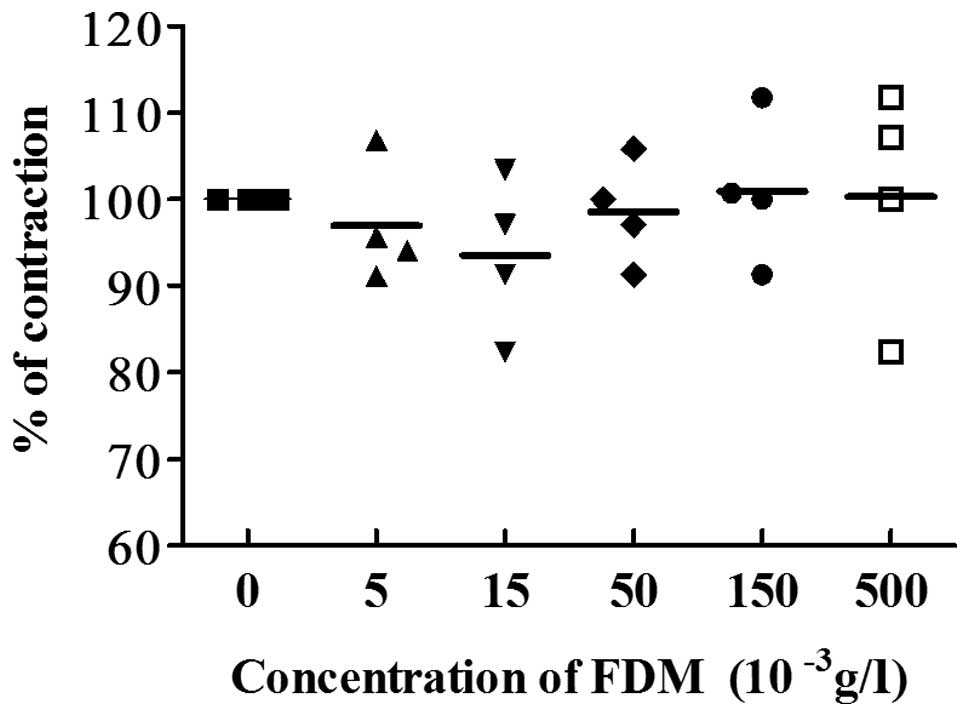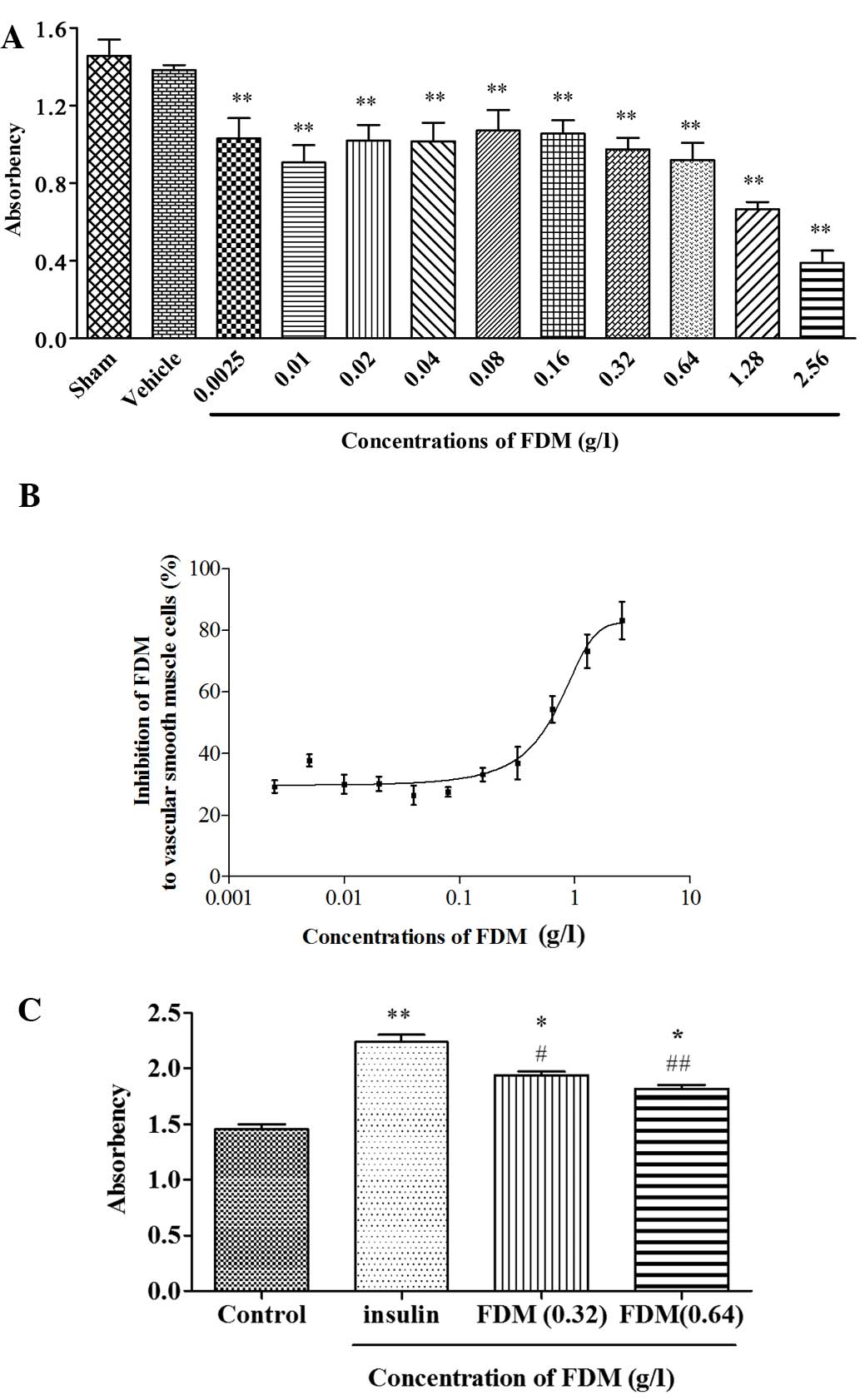|
1
|
Qin S and Wen X: Simultaneous
determination of 6 active components in Chrysanthemum morifolium by
HPLC. China Journal of Chinese Materia Medica. 36:1474–1477.
2011.In Chinese.
|
|
2
|
Yu SK, Zhang Y and Wu XQ: Nutrition
component and bioactivity of Dendranthema morifolium (Ramat.)
Tzvel. cv. Hangju. Chinese Food and Nutrition. 2:50–51. 2002.
|
|
3
|
Liang YN, Guo QS, Zhang ZY, Wang SX and
Wang T: Study on dynamic accumulation of secondary metabolites
content and isoenzyme activity during blossoming stages in
Chrysanthemum morifolium originating from Wenxian county. Zhongguo
Zhong Yao Za Zhi. 32:199–202. 2007.In Chinese. PubMed/NCBI
|
|
4
|
Dai M, Liu Q, Li D and Liu L: Research of
material bases on antifebrile and hypetensive effects of flos
chrysanthemi. Zhong Yao Cai. 24:505–506. 2001.In Chinese.
PubMed/NCBI
|
|
5
|
Jiang H, Xia Q, Xu W and Zheng M:
Chrysanthemum mori-folium attenuated the reduction of contraction
of isolated rat heart and cardiomyocytes induced by
ischemia/reperfusion. Pharmazie. 59:565–567. 2004.PubMed/NCBI
|
|
6
|
Huang H, Guo HY and Jin HF: Effects of
water extract of Dendranthema morifolium on myocardial ischemia in
canines. Zhongguo Zhong Yao Za Zhi. 21:307–310. 2011.
|
|
7
|
Guo S: Insulin signaling, resistance and
metabolic syndrome: Insights from mouse models into disease
mechanisms. J Endocrinol. 220:T1–T23. 2014. View Article : Google Scholar
|
|
8
|
Cersosimo E, Xu X and Musi N: Potential
role of insulin signaling on vascular smooth muscle cell migration,
proliferation, and inflammation pathways. Am J Physiol Cell
Physiol. 302:C652–C657. 2012. View Article : Google Scholar
|
|
9
|
Chen J, Dai M and Wang Y: Paeonol inhibits
proliferation of vascular smooth muscle cells stimulated by high
glucose via Ras-Raf-ERK1/2 signaling pathway in coculture model.
Evid Based Complement Alternat Med. 2014:4842692014. View Article : Google Scholar : PubMed/NCBI
|
|
10
|
Wang K, Wen L, Peng W, Li H, Zhuang J, Lu
Y, Liu B, Li X, Li W and Xu Y: Vinpocetine attenuates neointimal
hyper-plasia in diabetic rat carotid arteries after balloon injury.
PLoS One. 9:e968942014. View Article : Google Scholar
|
|
11
|
Xing J, Peng K, Cao W, Lian X, Wang Q and
Wang X: Effects of total flavonoids from Dracocephalum moldavica on
the proliferation, migration, and adhesion molecule expression of
rat vascular smooth muscle cells induced by TNF-α. Pharm Biol.
51:74–83. 2013. View Article : Google Scholar
|
|
12
|
Jiang D, Li D and Wu W: Inhibitory effects
and mechanisms of luteolin on proliferation and migration of
vascular smooth muscle cells. Nutrients. 5:1648–1659. 2013.
View Article : Google Scholar : PubMed/NCBI
|
|
13
|
Jiang H, Xia Q, Xu W and Zeng M:
Chrysanthemum mori- folium attenuated the reduction of contraction
of isolated heart and cardiomyocytes induced by
ischemia/reperfusion. Pharmazie. 59:565–567. 2004.PubMed/NCBI
|
|
14
|
Kim SH, Kang KW, Kim KW and Kim ND:
Procyanidins in crataegus extract evoke endothelium-dependent
vasorelaxation in rat aorta. Life Sci. 67:121–131. 2000. View Article : Google Scholar : PubMed/NCBI
|
|
15
|
Zhang S, Yang Y, Kone BC, Allen JC and
Kahn AM: Insulin-stimulated cyclic guanosine monophosphate inhibits
vascular smooth muscle cell migration by inhibiting
Ca/calmodulin-dependent protein kinase II. Circulation.
107:1539–1544. 2003. View Article : Google Scholar : PubMed/NCBI
|
|
16
|
Ta ka hashi S, Abe T, Gotoh J and Fukuuchi
Y: Substrate-dependence of reduction of MTT: A tetrazolium dye
differs in cultured astroglia and neurons. Neurochem Int.
40:441–448. 2002. View Article : Google Scholar
|
|
17
|
Ajay M, Gilani AU and Mustafa MR: Effects
of flavonoids on vascular smooth muscle of the isolated rat
thoracic aorta. Life Sci. 74:603–612. 2003. View Article : Google Scholar : PubMed/NCBI
|
|
18
|
Jiang HD, Cai J, Xu JH, Zhou XM and Xia Q:
Endothelium-dependent and direct relaxation induced by ethyl
acetate extract from Flos Chrysanthemi in rat thoracic aorta. J
Ethnopharmacol. 101:221–226. 2005. View Article : Google Scholar : PubMed/NCBI
|
|
19
|
Ji J, Benishin CG and Pang PK: Nitric
oxide selectively inhibits intracellular Ca2+ release elicited by
inositol trisphosphate but not caffeine in rat vascular smooth
muscle. J Pharmacol Exp Ther. 285:16–21. 1998.PubMed/NCBI
|
|
20
|
Amberg GC and Navedo MF: Calcium dynamics
in vascular smooth muscle. Microcirculation. 20:281–289. 2013.
View Article : Google Scholar : PubMed/NCBI
|













